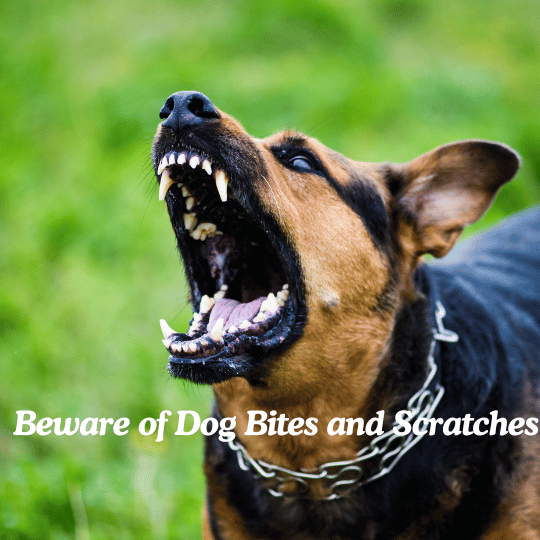Rabies remains a significant public health issue in the Philippines. The country has one of the highest incidences of rabies in Southeast Asia. Dogs are the primary source of human rabies cases in the Philippines, with most infections occurring in rural and peri-urban areas.

Another reason why we have so many dog-related cases in the Philippines is because of our high dog population. There are 18 million documented dogs in the Philippines and almost half that number of stray or undocumented dogs.

Note: Dogs aren’t just the animals that can transmit rabies. Cats, bats, cows, horses, goats, and monkeys can also transmit the virus. Lions too. So be careful when you’re petting domesticated or exotic animals or pets.
Other animals: mongoose, weasels, domestic farm animals, groundhogs, bears, wild carnivores, raccoons, foxes, wolves, coyotes, etc. Don’t want rabies? Don’t get bit.
Global situation: Worldwide, this viruss causes an estimated 59,000 human deaths annually, with 95% of cases occurring in Africa and Asia. It’s present on all continents except Antarctica.
This virus doesn’t just affect human lives, it also affects the economy.
Globally, we lose around $8.6 billion annually. Think of how that amount of money could best benefit the rest of the world if it were reallocated for medical research, building medical facilities or bolstering the health provision system of any country.
The Zero by 30″ initiative, a collaboration between WHO, OIE, FAO, and GARC is something to look forward to by 2030.
How to Prevent Rabies
Vaccinate Pets
Prevention is always the best way to avoid getting rabies. As a responsible dog owner, you should get your cat or dog vaccinated immediately. This reduces the risk of contracting rabies from your beloved pets.
The constant contact with your pets increases your chances of getting bit or scratched which could lead to the transmission of the virus.
Avoid Contact with Stray or Wild Animals
I know how it feels when we see a poor, helpless stray or wild animal and how it tugs at your heart to help it but if you can, avoid contact at all costs. If it can’t be avoided, consider getting shots for the animal and for yourself.
Seek Immediate Medical Attention if Bitten or Scratched by an Animal
This applies to pets, domestic animals and strays or wild animals. You can never be too careful. The least you could get are tetanus shots to ensure the wound doesn’t get infected and lead to worse things in the near future.
If you value your life, get anti-rabies shots.
Educate Communities About Rabies Risks and Prevention
I believe it is our social responsibility to educate the people and communities around us of the risks of rabies. Educating everyone about the virus can potentially save a life because not everyone thinks about the consequences of a simple scratch or bite from their pets or livestock.
Support Local Rabies Control Programs
This takes it a step further as there is now an active attempt to help people around you through the support you can give to prevent rabies from taking hold in the community.
What are Symptoms that You Have Rabies?
Early symptoms:
- Fever
- Headache
- General weakness
- Discomfort at the bite site
As the disease progresses:
- Anxiety
- Confusion
- Agitation
- Hallucinations
- Hydrophobia (fear of water)
- Aerophobia (fear of drafts or fresh air)
- Insomnia
- Paralysis
Fatality: Rabies is almost always fatal once clinical symptoms appear. It has the highest case-fatality rate of any infectious disease, approaching 100% without proper treatment.
Available medicines and treatments:
- Post-exposure prophylaxis (PEP): A series of rabies vaccinations given immediately after potential exposure, often combined with rabies immunoglobulin.
- Pre-exposure vaccination: Recommended for people at high risk of exposure, such as veterinarians or wildlife workers.
- Rabies immunoglobulin: Provides immediate antibodies to fight the virus while waiting for the vaccine to take effect.
- Supportive care: Once symptoms develop, treatment focuses on comfort care as there is no proven cure for clinical rabies.
- Milwaukee Protocol: An experimental treatment involving induced coma and antiviral drugs. It has had limited success and remains controversial.
Here are vaccines available in the Philippines
Note: There are counterfeit products in the market featuring the above-mentioned vaccines. We can help you purchase genuine, Philippines FDA-approved anti-rabies vaccines. Give us a call or leave us a message for more assistance.
It’s crucial to note that prevention and immediate post-exposure treatment are key to fighting rabies. Once symptoms appear, the disease is almost always fatal.
Rabies Prevention Strategies
Animal Vaccination
- Mass vaccinations of cats and dogs is the most cost-effective strategy for preventing human rabies.
- Aim to vaccinate at least 70% of the dog population in endemic areas.
- Regular boosters are necessary to maintain immunity.

Animal Population Management
- Implement responsible pet ownership programs.
- Control stray animal populations through humane methods like spay/neuter programs.
Public Education
- Teach people, especially children, about safe behavior around animals.
- Promote awareness of the importance of seeking medical care after animal bites.
Healthcare System Preparedness
- Ensure availability of post-exposure prophylaxis in healthcare facilities. For help with supplies, give us a call
- Train healthcare workers in proper wound care and rabies prevention protocols.
Together, we can eradicate rabies from keeping us gripped in its terrifying claws (and teeth). Let’s push for more rabies prevention education and ensuring health facilities are fully stocked with anti-rabies vaccines. Animal vaccination and population control should also be considered.
Conclusion
If you or anyone you know has been bit or scratched by an animal (any animal whether a pet, domesticated livestock, stray or wild ) make sure you thoroughly wash the wound site with soap and running water to quickly disinfect it.
The next step is to head to a medical facility and have a medical expert look at the wound and prescribe a treatment plan.
Make sure the prescribed medical treatment plan is followed through to reduce a potential rabies fatality.
For anti-rabies vaccines, medical supplies, pharmaceuticals, medical equipment and other medical-related products, contact Canomed Corporation. We are an established Medical Wholesaler and Distributor in Bambang for over 20 years. We can serve medical suppliers in Luzon, Visayas, and Mindanao

Comments